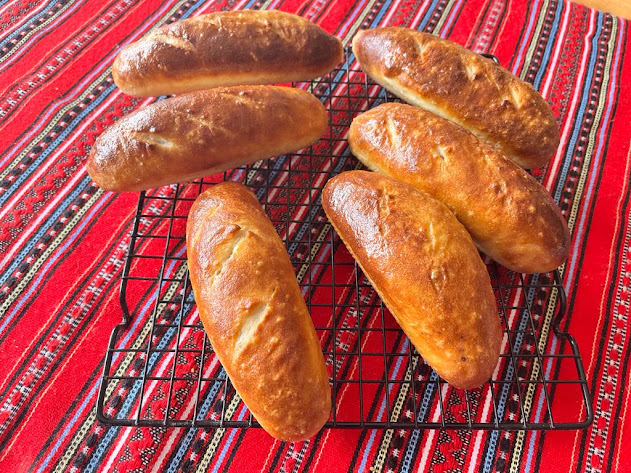Bánh Mì (Vietnamese Baguette)
Welcome to another step-by-step recipe from BreadClub20. Why not drop by our main Facebook page by clicking here.... If you like what you see and enjoy the recipe, we hope you join us by 'Liking' and 'Subscribing'.
Pronounced 'BUNN-Mee', the Vietnamese Bánh Mì is not only a bread but also a sandwich. The name is used not only for the bread itself and also for the culinary fusion of two cultures when made into a sandwich.
When Vietnam fell under French colonial rule in the mid-19th century, the Vietnamese first encountered the French baguette. Made in the same way as it was back in France, it soon became a staple favourite for the Vietnamese who filled them with cold meats, butter, cheese or pâté.
When French rule ended in 1954, the French might have returned home, but the baguette stayed. The butter made way for mayonnaise, and fresh chillies made an appearance along with pickled vegetables.
This distinctly Vietnamese sandwich first appeared in Saigon and the filled baguette became the Bánh Mì.
Saigon fell in 1975 and the refugees who made their way to major European and American cities took their language, culture and Bánh Mì with them.
However, this is not simply a French baguette. It is a Bánh Mì and should be made with care to ensure it is as close to the original as possible.
I first encountered Bánh Mì back in 2012 when I spent Christmas in Hanoi. We would buy them from the local grocery store, freshly baked that morning. Like all French bread - they don't have a long shelf life.
 |
| October 2013: Lonely Planet magazine. |
INGREDIENTS
500 gms strong white bread flour (at least 12% protein)
340 gms tepid water
5 gms white sugar
4 gms crushed sea salt
3 gms dry yeast
¼ teaspoon vitamin C powder
2 teaspoons dough improver
For the glaze
melted butter and a brush
You will also need some cheesecloth and either baguette formers or tea towel couches laid over a baking sheet.
Into a bowl or mixer, add the water, flour, improver, dry yeast, sugar, salt and vitamin C.
Mix and then knead until you have an elastic but sticky dough.
Place in a lightly-oiled bowl and leave covered for 20 minutes.
After 20 minutes, oil your hands and divide the dough into 70 gms portions. You should have approximately 12 portions from a 500 gms flour mix.
To prove your dough, you need an environment that is as near to 30⁰C as possible, and quite humid.
Experiment within your kitchen environment to find the best place.
Prepare baguette pans or floured tea towel couches.
Taking each portion of dough in turn, flatten it into a rectangle and then into a 5 inch long baguette. Place it on the baguette pan or couche and move on to the other portions.
Wet two pieces of cheesecloth and ly them over the dough to top them drying out and forming a crust.
Let the dough rise for 2½ hours until quadrupled. You may need to adjust the cheesecloth to stop it from hindering growth.
Preheat the oven to 240⁰C. Place a pan at the bottom of the oven and fill with boiling water.
Remove the cheesecloth and mist the dough with water.
Score each Bánh Mì with three razor cuts ½cm deep and at a 45⁰ angle.
Mist with water again and place into the oven, ensuring that there is as much steam present as possible.
Bake for 17 minutes or until the Bánh Mì are golden brown.
Quickly flip the Bánh Mì and continue baking for another 3 or 4 minutes.
Remove from the oven and place on a cooling tray. The Bánh Mì may crack open, don't worry, that's even more authentic.
Brush with melted butter to give them a nice shine.
Eact on the same day or freeze and then serve warm after thawing.
PS Taste tester verdict?

.jpeg)





Comments
Post a Comment